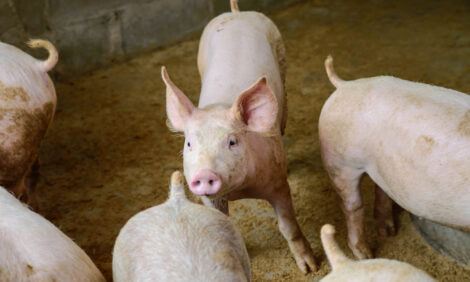



September Hog and Pig Report: Expansion Continues
US - By Shane Ellis. The national swine herd continues to expand amid profitable market prices and moderating feed costs. The national swine inventory expanded 2.8 percent in the past year. This is the seventh year in a row that September national swine inventories have increased, with all hogs now totaling 64.6 million head.The national swine breeding herd is now 6.1 million head. Producers are still expanding at a steady and deliberate rate. Table 1 contains a summary of the September Hog and Pig Report with the percentage change from a year ago.

Iowa continues to have straight line inventories of breeding swine, while ever more feeder pigs are imported into the state. Iowa market hog inventories are up 5.1 percent from a year ago, while breeding swine numbers are down almost a percent.
Supply Side Factors
This is the largest September inventory of market hogs on record since the series began in 1973. The additional market hog supply is coming from the expanding breeding herd, more pigs produced in each litter, and reduced mortality. The vaccine for circovirus has helped to significantly reduce sickness and death loss among feeder pigs. Slaughter capacity has been a concern for the pork industry coming into the fall months. Figure 1 is a graph of the estimated fourth quarter hog slaughter based on current hog inventories. Packers, historically, have been able to handle over 2.2 million head each week, so packer capacity may not be as tight as once feared. There will be some busy weeks and perhaps several large Saturday kills as the larger supply of hogs are finished.
 |
| Figure 1. Fourth Quarter Estimated Weekly Hog Slaughter |
Demand Side Factors
Domestic demand for pork is drawing most of its stability from the high price of competing meats. Poultry in particular has been expensive enough to drive consumers to the “other” white meat. August broiler retail prices were up 9% from a year ago, beef was up 6%, and pork was only 3% higher. Competition from poultry is likely to continue to grow in the coming months as egg sets and chick placements remain consistently higher than a year ago. Generally, an increased supply of meat leads to lower prices, and a moderation in pork prices in the next quarter will be accompanied by additional consumption. Figure 2 compares the trends in quarterly hog prices and per capita consumption over the past four years. The seasonality and trends between hog price and consumption are evident.
 |
| Figure 2. National Lean Hog Prices, Per Capita Pork Consumption |
Foreign pork demand has proved to be a mixed bag so far this year. Total pork exports are down 2.8%, with Mexico and Russia importing 30% and 18% less US pork than a year ago. On the positive side, exports to China are up 79%, and Japan continues to be our largest pork consumer with 8% market expansion from a year ago. China may prove to be the next boom market for US pork. In the past year, disease has taken a heavy toll on Chinese hog production. Combined with a weakening US dollar, the conditions are very good for increased pork trade. The one catch is that China will only import pork that is free of ractopamine, a popular feed additive used in swine rations.
Production and Price Forecast
Additional hog supplies are going to create some bearish conditions in the hog market in the coming months. With strong demand in the corn market there will be chance of losses in the fourth quarter of this year and into the first part of 2008. Table 2 contains the ISU forecasted price, basis adjusted futures price, and change in pork production. Producers are likely watching the feed markets, as the start of harvest corn stocks were higher than expected. Soybean meal may become an increasingly scarce and expensive commodity with reduced soybean supplies.

Further Reading
|
|
- To view the full USDA Quarterly Pigs and Hogs Report click here. |








